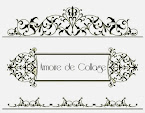Every hobby, industry, and interest has its own nomenclature, and the antique business is no exception. Let’s start with the word antique. Unless a dealer is solely concentrating on the purchase and sale of items that are one hundred years of age or older, theoretically they’re not an ‘antique dealer.’
The term is used loosely because a dealer will handle some items that are old enough to be genuine antiques, but not all of their merchandise will qualify as an authentic antique. Where the semantics get muddled is in the descriptions of the rest of the merchandise, so to clarify them…
An antique is any work of art, decorative object, item of jewelry, mechanical device (i.e. clock), or piece of furniture, created or produced one hundred years prior to the current year. An exquisite example would be American brilliant cut glass. The Brilliant Period lasted from approximately 1876 to 1914. Golden oak furniture manufactured in the early 1900's and sold widely through the Sears, Roebuck & Co. catalog business, would be another, but not Art Deco furniture which wasn’t produced until 1925 when the the Exposition Internationale des Arts Décoratifs et Industriels Modernes (International Exposition of Modern Decorative and Industrial Arts) was held in Paris that year. Within the next decade, it too will achieve ‘antique’ status. This is significant because the value of items doesn’t just increase incrementally when it reaches 100 years of age, it often increases exponentially, contingent on the demand and the economy. As successive generations grow up without being introduced or appreciating the works of craftsman long since gone, the lower the demand will be.
Items less than 100 years old are referred to as vintage, but should be used in context with the item, as in ‘1960’s vintage clothing.’ Most dealers are in agreement that vintage should only apply to items that are at least twenty years old. Some say the item should also have some redeeming value and interest to collectors. Twenty-year old paper bags do not.
Which brings us to the term collectible. A collectible doesn’t need to be 20+ years. It just has to be an item valued and sought by collectors. Many numbered figurines, sports memorabilia, and limited-edition toys are highly collectible, but not vintage or antique. A word of caution. Limited edition items can be released in volumes high enough to saturate the market thus devaluing them. Case in point, the bane of collectibles, those adorable Beanie Babies.
Here’s where the water gets really murky...Retro versus Repro. The difference between these two is based primarily on intention. Retro is imitative of a style, fashion, or design from the recent past. It’s the dealer’s intention to provide a quality item that represents a previous era to customers seeking that item. Mid-century furniture is often referred to as Retro, but in fact, it’s vintage. Furniture made to look like it’s from the 1950's would be correctly identified as Retro.
Repro, for reproduction, is made to represent an older item, but is marked or even distressed, to give the illusion that it’s from a previous era. The intention of the seller is to deceive in order to obtain a higher price for the item. Collectors are advised to do their research. Learn the difference between the old and the reproductions. Many reference books on collectibles have a section on reproductions that have been produced. It’s often been said that the first thing you should add to your collection is a good book about the item you’re interested in collecting.
As stewards of antiques and collectibles, a certain amount of responsibility goes along with seeing that they’re cherished for years to come, not disposed of with little regard as to their value. At some point the torch has to be passed to the next generation, to quote John F. Kennedy. In addition to passing down antiques and family heirlooms, share your knowledge and the nomenclature, to educate the recipients and cultivate their interest in antiques.
#Antiques #Vintage #Collectibles #Retro #Repro




No comments:
Post a Comment